New Balance Fresh Foam More Trail v1
Test Locations: Gunnison — Crested Butte, Colorado; Moab, Utah
Test Duration: 86 miles
Stated Stack Height: 34 mm (heel) / 30 mm (forefoot)
Stated Heel-to-Toe Drop: 4 mm
Stated Features:
- Fresh Foam midsole cushioning is precision engineered to deliver an ultra-cushioned, lightweight ride
- Grippy, lugged outsole for traction
- Synthetic/mesh upper for durability and breathability
Reviewer: 6’1″, 185 lbs / 185 cm, 84 kg
Size Tested: US Men’s 11.5
Stated Weight per Shoe (US Men’s Size 9): 295 g / 10.4 oz
Blister Measured Weight (US Men’s 11.5):
- Shoes + Laces: 311 g (left) & 312 g (right)
- Insoles: 26 g (left) & 26 g (right)
- Total: 337 g (left) & 338 g (right)
MSRP: $164.99

Intro
Over the years, New Balance has catered to the various trends of the running world. Ten years ago the hype was around minimalist, zero-drop shoes such as the New Balance Minimus. But with the current swing towards maximalist shoes, New Balance released the Fresh Foam More Trail v1 to cater to runners who prefer more cushioning.
The Fresh Foam More Trail v1 stacks up at 34 mm in the heel and 30 mm in the forefoot, and New Balance states that the Fresh Foam midsole is designed to provide an “ultra-cushioned, lightweight ride.” In addition to the thick midsole, New Balance has given the More Trail v1 a lugged-up outsole and a mesh upper that is stated to be both durable and breathable.
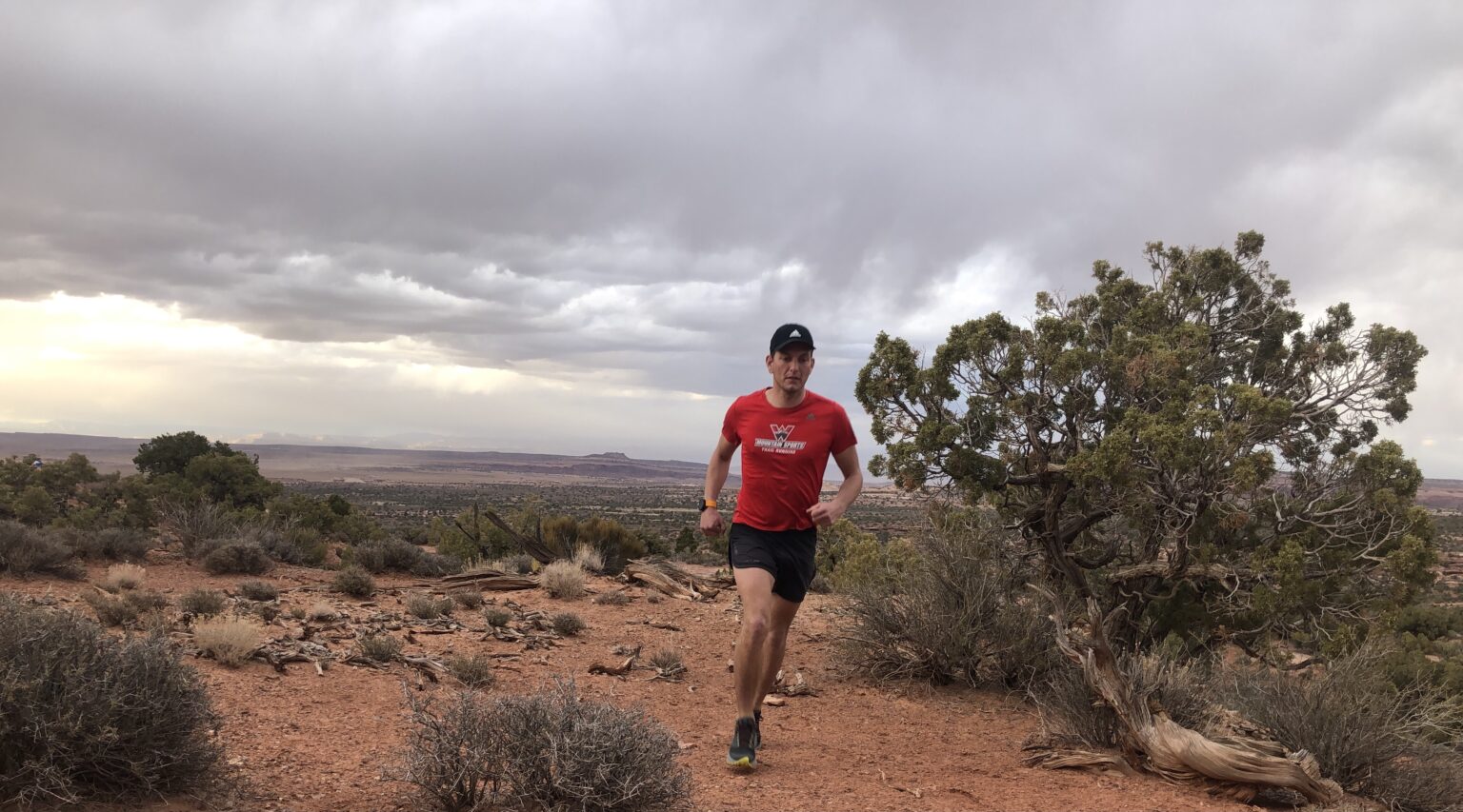
Fit
If you are looking for a new pair of running shoes, it’s always best to first try them on at a local running store, if possible. Your feet and fit preferences are uniquely yours, and the only way to know for sure if a shoe will fit you well is to try it on yourself. With that in mind, to provide some idea as to how the New Balance Fresh Foam More Trail v1 fits, I’ll describe how it feels on my feet and compare it to other shoes that I have used. With wide, high-volume feet and high arches, I like a shoe with a wide toe box and good support under the midfoot. I also like shoes that have a secure fit around the midfoot and in the heel to keep my feet from shifting around on rough terrain.
With that said, my favorite aspect of the Fresh Foam More Trail v1 has been the fit. It almost seems like New Balance molded this shoe specifically for my feet. The length feels true to size, and I’d say the width is somewhere between “regular” and “wide.” Although New Balance offers a wide version of the More Trail, I have found their standard-width version to have ample space for my somewhat wide feet. If you have extremely wide feet and struggle to find any shoe that fits well, the wide version of the More Trail could definitely be worth trying out. Because I prefer more space in the toes rather than the heel / midfoot, I think the shape of the More Trail’s toe box is what makes it feel so great. The toe box is a little more rounded out and does not taper in as much around the little toes as the Hoka One One Evo Mafate 2. If I had to pick a shoe that feels similar to the More Trail as far as the toe box is concerned, I’d go with the Altra Timp 1.5.

In addition to a nice, wide toe box, the More Trail v1’s arch feels very supportive and comfortable for my preferences. For the last few years, I have been looking for a shoe that combines the defined, supportive arch you often find in Salomon shoes with the wide toe box and plush cushioning I’ve found on many Altra shoes. In the Altra Timp 1.5, for example, my high arches would occasionally get sore after long runs, but I enjoyed the extra width in the toes. On the other hand, the arch on the Salomon Sense Ride 2 felt incredible, but I wished for a bit more width in the toes on runs over 2 hours. New Balance has seemingly found a good balance of arch support and width in the Fresh Foam More Trail v1. I can comfortably run in the shoe for hours without bruising toenails or developing sore arches.
That brings us back to the midfoot and heel. I didn’t feel that this was the most secure shoe — especially compared to something like the Salomon S/LAB Ultra — but it did snug up enough around the midfoot to keep my foot from swimming around. I wouldn’t choose the More Trail v1 if I was going to be doing a lot of off-camber side-hilling, but I felt comfortable running some steeper and more technical terrain without too much lateral foot movement. The tongue has been comfortable as well, and when laced up tightly, the pressure was well dispersed and did not cause any discomfort. I did not have any problems with heel slippage, and felt that the heel cupped my feet well. Overall, this has been one of the best fitting and most comfortable shoes that I have ever laced up.
Weight
If you’re concerned about cutting a few grams here and there, you can certainly find lighter options than the Fresh Foam More Trail v1. However, considering the 30+ mm stack height and plush cushioning of the More Trail v1, I feel that the stated weight of 295 g / 10.4 oz for a US Men’s Size 9 is very reasonable. To provide a gauge of how the More Trail v1 stacks up against some of the competitors in its class, here are the stated weights of similar shoes from other brands (all stated weights are based on a US Men’s size 9):
272 g / 9.6 oz – Altra Timp 3
290 g / 10.2 oz – Salomon Sense Ride 4
292 g / 10.3 oz – Hoka One One Evo Mafate 2
295 g / 10.4 oz – New Balance Fresh Foam More Trail v1
295 g / 10.4 oz – Topo Ultraventure 2
295 g / 10.4 oz – On Cloudultra
301 g / 10.6 oz – Brooks Caldera 5
329 g / 11.6 oz – Altra Olympus 4
332 g / 11.7 oz – Hoka One One Stinson ATR 6
As you can see, the Fresh Foam More Trail v1 is fairly average in weight compared to some of its peers. While I was testing the More Trail v1, I was simultaneously reviewing the Hoka Evo Mafate 2. The Evo Mafate 2 is only 3 g / .1 oz lighter and has a 1 mm higher stack height, so I was able to make some good comparisons between the two. The Evo Mafate 2 felt a bit lighter than the Fresh Foam More Trail v1, even though they are very close in weight. I contributed this lighter feel to the two shoes’ different midsole materials. The Evo Mafate 2 felt lighter to me partially due to the springiness of the midsole, whereas the More Trail v1 has more of a plush midsole that didn’t seem to provide the same energy return.
All in all, 295 g / 10.4 oz feels pretty good for a shoe that provides such a smooth, protective, and plush ride like the More Trial v1 does. The only time I noticed the weight of these shoes was when they were sopping wet or coated in clay-like mud. Even in that case, they didn’t hold an immense amount of water weight, and the mud issue is rather unavoidable with any shoe.

Midsole
By now, I’m sure you could guess what midsole material New Balance uses for the Fresh Foam More Trail v1. That’s right — the “Fresh Foam” midsole makes up most of the shoe’s 30+ mm stack height. As New Balance states, the More Trail v1’s Fresh Foam midsole is designed to create an “ultra-cushioned, lightweight ride.” Ultra-cushioned it was, and below I’ll get into the details on one of the biggest reasons I am in love with this shoe.
The Fresh Foam material creates, quite simply, the most comfortable midsole that I’ve run on in quite some time. It’s thick, and it’s plush. At the same time, it’s not as absurdly bulky or heavy as you might expect. The Altra Olympus 4 (329 g / 11.6 oz) and the Hoka Stinson ATR 6 (332 g / 11.7 oz) provide similar plushness, but are both over an ounce heavier than the 295 g / 10.4 oz More Trail v1. In comparison to the Hoka Evo Mafate 2, which has a very similar stack height to the More Trail v1, the More Trail v1 felt way more plush and comfortable. Now, if you’re looking for a fast shoe with more spring to its step, the More Trail v1 will fall short when compared to the Evo Mafate 2.
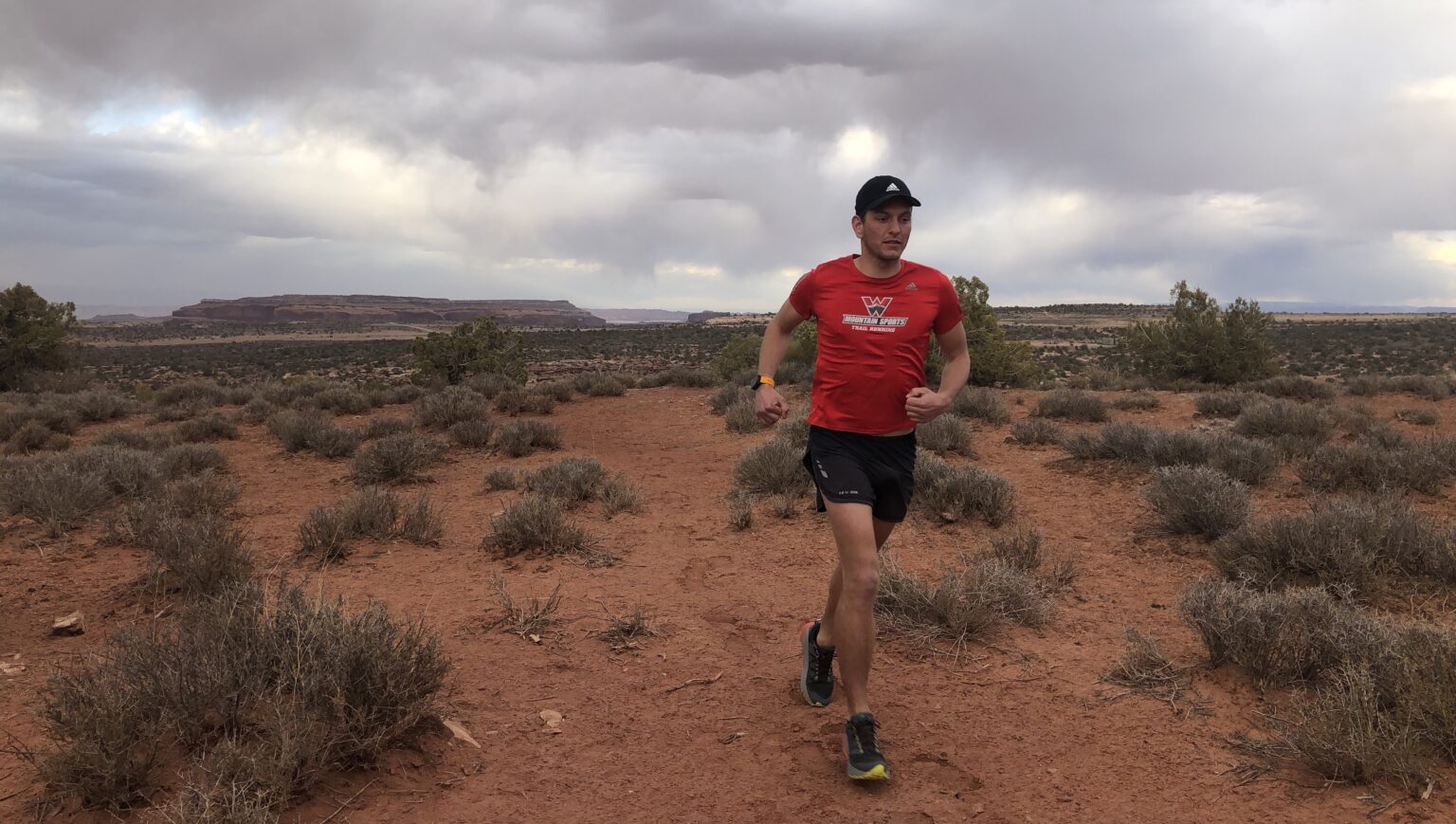
From my perspective, though, the purpose of the More Trail v1 is to be comfortable for as long as you are on your feet. I feel that I could run any distance in the More Trail v1 and be happy, whereas similar shoes with thinner midsoles or less plush midsole materials can lead to sore feet much quicker. Another word that I would use to describe how the More Trail v1 performs on trails is damping. When running long distances and / or on rough terrain, my feet were well protected and the impact of each step felt significantly reduced compared to similar shoes (even those with similarly thick midsoles).
Another aspect of the Fresh Foam More Trail v1 that I like is the 4 mm heel-to-toe drop. I tend to prefer shoes with a lower drop, and 4 mm is pretty much right in my personal sweet spot. I think it’s just enough drop to please those who prefer to have their heel slightly elevated, and little enough to appeal to many of those who are looking for the minimal-drop experience (i.e., not striking with your heel as often).
Outsole
Equipped with a grippy, lugged-out tread, the New Balance Fresh Foam More Trail v1 is intended to perform on all terrain. So far, the shoe’s elongated hexagonal lugs have kept me feeling secure on all surfaces. Although they aren’t as aggressive as the lugs of the Hoka Evo Mafate 2 or the Salomon Speedcross 5, the More Trail v1’s lugs have enough purchase to provide traction on most soft, loose surfaces.
While I thought the outsole of the More Trail v1 was good, it doesn’t seem to specialize in any specific conditions. It’s more of an all-round outsole that can handle any trail, but is best used on a little bit of everything. For example, the More Trail performed well in the mud and on steep, loose terrain, but in those conditions I don’t think it quite matches the 5 mm Vibram® Megagrip lugs of the Hoka Evo Mafate 2. The More Trail also handles well on slickrock, but a shoe with a stickier rubber compound and slightly lower-profile lugs like the Salomon S/LAB Ultra would still probably perform better.
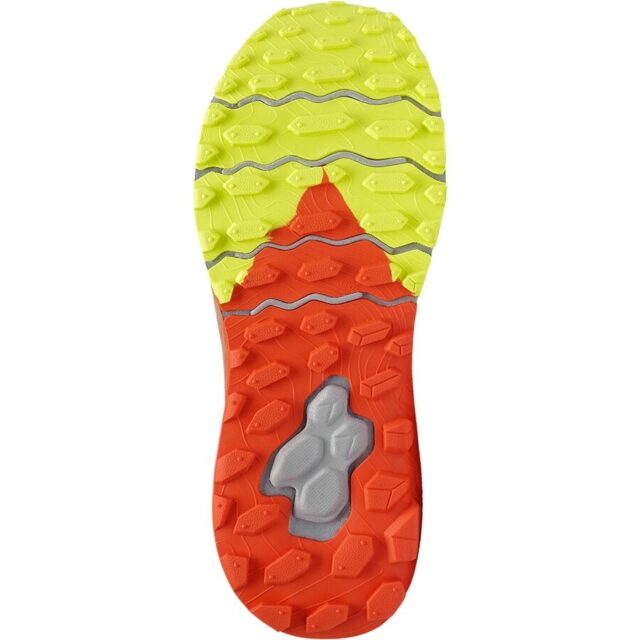
On Trail
Over the course of my first 86 miles in it, I have been able to get a good feel for how the New Balance Fresh Foam More Trail v1 performs on various trails. From the sand and slickrock of Moab, Utah to the hills and mountains of the Gunnison Valley, I have really fallen in love with this shoe. Whether running a couple miles or a couple hours, I have truly enjoyed this shoe. I would even go as far as saying that the More Trail v1 has been my favorite shoe ever.
Regardless of where I brought the More Trail v1, it provided a well cushioned, extremely comfortable ride. Spring trail running in the Gunnison area often comes with mud and melting snow. The More Trail v1 kept me well planted in these sloppy conditions, and although the traction wasn’t quite as impressive as the Hoka Evo Mafate 2, it shed the extra mud just as well — if not better. On the more arid and hard-packed trails of Gunnison in the early summer, the More Trail v1 felt smooth and handled the ball-bearing-like decomposed granite with ease.
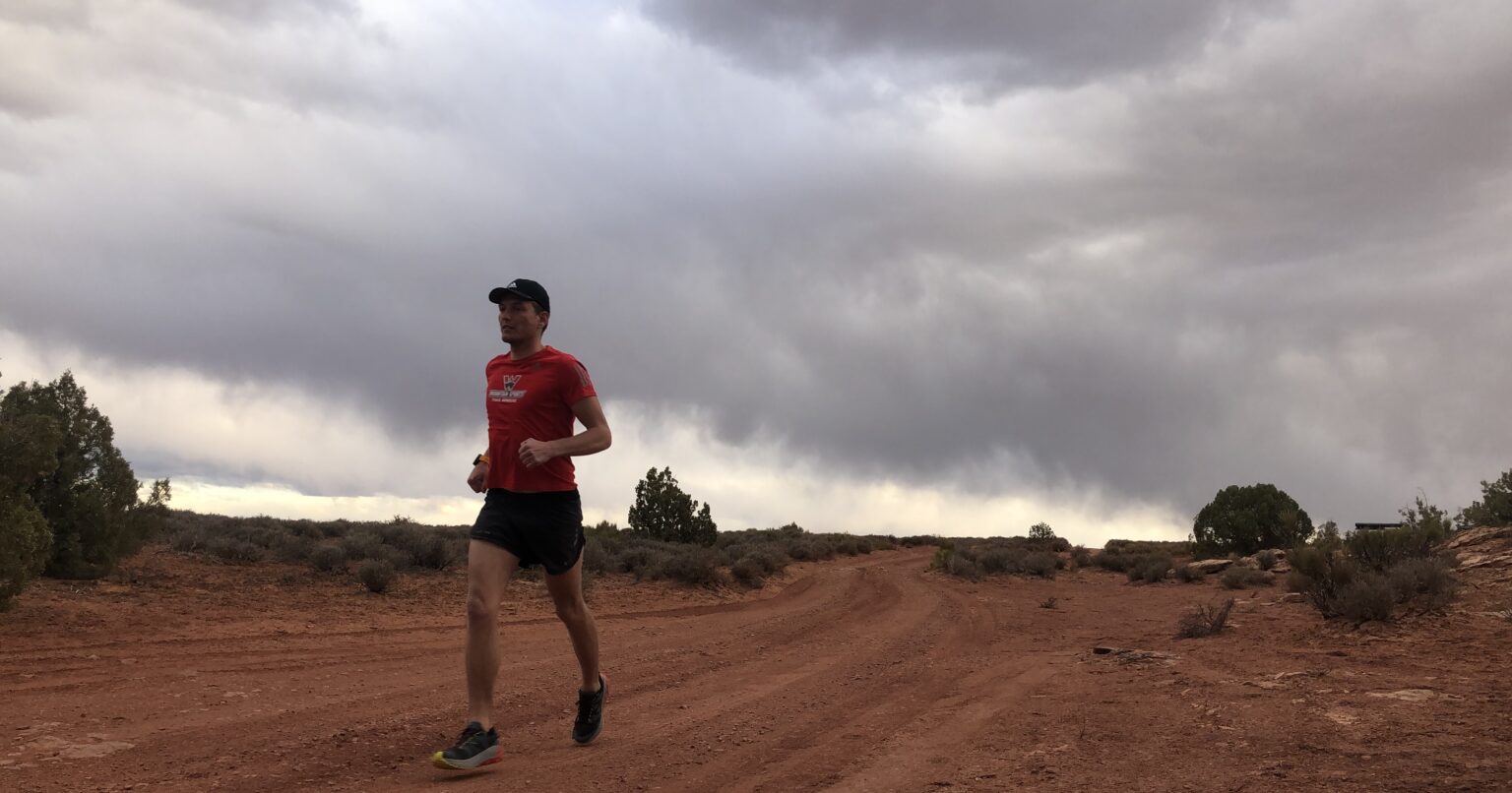
On The Trail
Over the course of my first 86 miles in it, I have been able to get a good feel for how the New Balance Fresh Foam More Trail v1 performs on various trails. From the sand and slickrock of Moab, Utah to the hills and mountains of the Gunnison Valley, I have really fallen in love with this shoe. Whether running a couple miles or a couple hours, I have truly enjoyed this shoe. I would even go as far as saying that the More Trail v1 has been my favorite shoe ever.
Regardless of where I brought the More Trail v1, it provided a well cushioned, extremely comfortable ride. Spring trail running in the Gunnison area often comes with mud and melting snow. The More Trail v1 kept me well planted in these sloppy conditions, and although the traction wasn’t quite as impressive as the Hoka Evo Mafate 2, it shed the extra mud just as well — if not better. On the more arid and hard-packed trails of Gunnison in the early summer, the More Trail v1 felt smooth and handled the ball-bearing-like decomposed granite with ease.
In steeper terrain where a shoe like the Altra Timp 1.5 has allowed my feet to slip around a little too much for my liking, I found the More Trail v1 to be more secure around the midfoot and it prevented too much slippage while side hilling or navigating steep descents. The More Trail still can’t compete with the security provided on this type of terrain by many narrower Salomon shoes I’ve used (e.g., Sense Ride 4 and S/LAB Ultra), but it locks down just enough to be comfortable on fairly steep, off-camber terrain. This fit around the midfoot was also good for slickrock, as it allowed me to switch directions quickly on a grippy surface without feeling like my feet were going to roll right off the platform of the shoe.
As the peaks are melting out around Crested Butte, I am excited to put these shoes to work on longer, high-alpine adventure runs. Having won me over with their smooth and comfortable ride, relative stability, supportive footbed, and grippy outsole, I feel that they will excel in the diverse conditions often encountered in the mountains. The longer I run in these shoes, the more I like them. They handle all trail surfaces admirably and keep my feet feeling good for hours at a time. And for the amount of comfort and protection that the More Trail v1 provides, their 295 g / 10.4 oz doesn’t feel like much. When I’m wearing the More Trail v1, I just want to run for hours, which is basically all I could hope for with a high-cushion trail shoe.
Durability
Over the first 86 miles, the Fresh Foam More Trail v1 has held up well. I have little concern over the durability of this shoe so far, and believe that I’ll be able to get a few hundred miles out of them. As I mentioned in the “upper” section, the mesh upper seems as though it will last the full life of the shoe. I often blow out the side of the upper on shoes, but so far there is no sign of wear on the More Trail v1. The light reinforcement around the toe has held up well without seemingly causing any extra stress on the mesh where the two materials converge. The outsole is so far holding its lugs pretty well and shows minimal wear as well. The midsole has the most sign of wear so far, with some signs of compression. But with 30 mm in the forefoot and 34 mm in the heel, I’m not too concerned about a bit of compression as it would take a lot to pack out the shoes to the point where it actually impacts the ride. With a plush midsole like this, I expect the foam to at least partially compact over time. So long as they continue to wear evenly, I expect to get average to above-average mileage out of the More Trail v1. As always, if I run into any unusual durability issues with this shoe in the future, I’ll update this section.
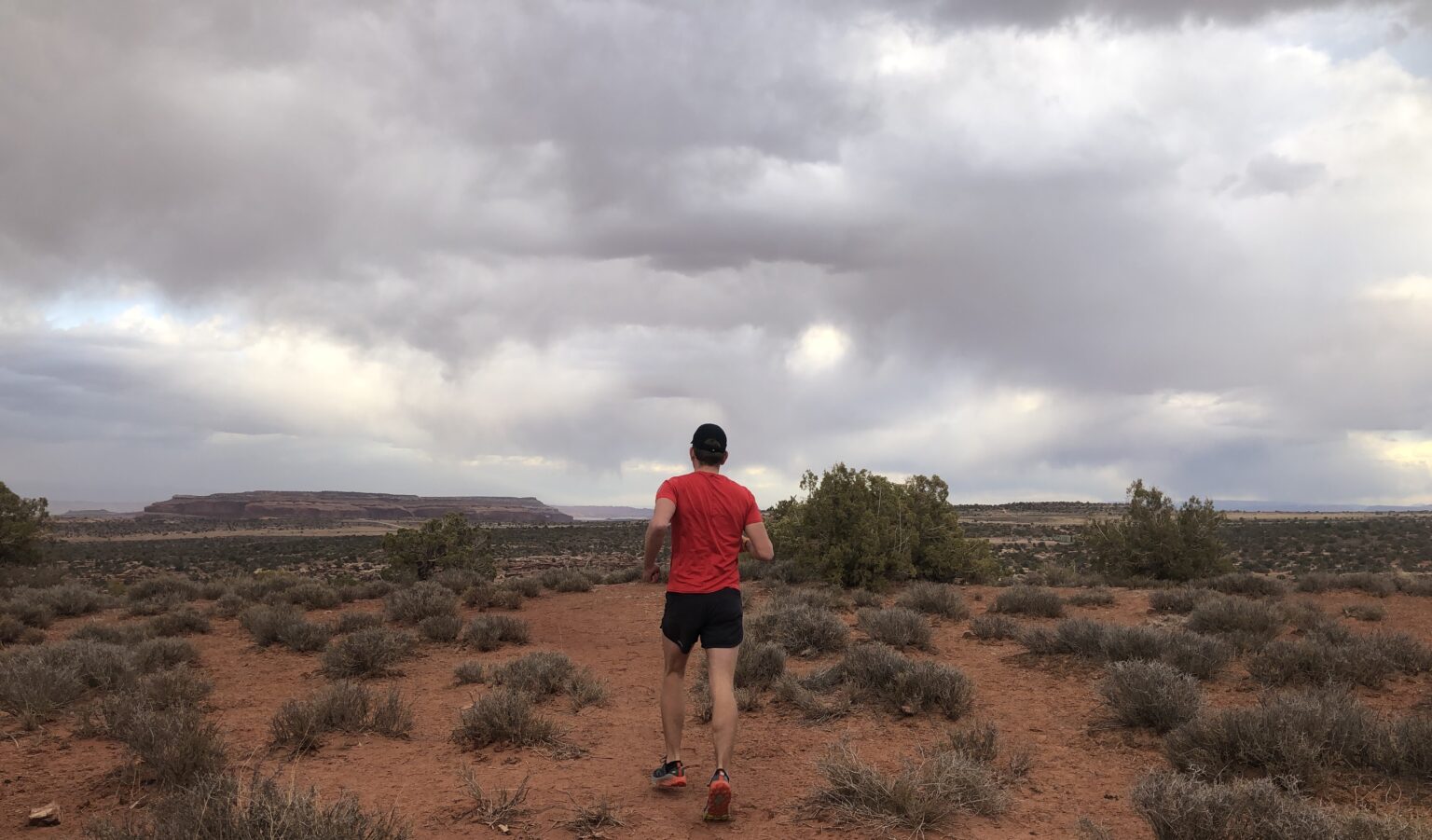
Who’s It For?
I think the New Balance Fresh Foam More Trail v1 has a lot to offer for those who are looking for a comfortable, high-stack trail shoe with minimal heel-to-toe drop. If you enjoy a wide toe box, appreciate a well-defined arch, and want a plush ride that makes runs feel less harsh on your feet and legs, this shoe is certainly worth a try — especially if you intend to cover a lot of terrain over long distances. At least for my feet and my preferences, this is just about the perfect trail running shoe for ultra-distances. At $165, the More Trail v1 isn’t cheap, but if it fits your preferences anywhere near as well as it did for me, I think it’s worth every penny.
Bottom Line
The New Balance Fresh Foam More Trail v1 has become an all-time favorite for me. A lot of why I love this shoe so much has to do with my preferences — I like well-cushioned, plush shoes with wide toe boxes and that provide good traction on most trail surfaces. The More Trail v1 checked all the boxes on my list, making it great regardless of where I brought it. And in what is a pretty rare case, I haven’t noticed any major shortcomings with this shoe.
I can think of shoes that perform better in specific cases, but as the full package, I can’t think of a shoe that has provided a better overall experience on as many types of runs than the More Trail v1. So if you’re looking for a great all-round trail shoe that is comfortable and reliable on long runs and most trails, the More Trail v1 should definitely be on your list of shoes to try on. I know I will be spending many miles in these shoes in the future, and plan on getting another pair to use for the High Lonesome 100 later this summer.


Thanks for the review! I have been a new balance person for the last umpteen years I never tried any of their Trail running shoes. After reading your review I definitely want to try out some of these shoes!